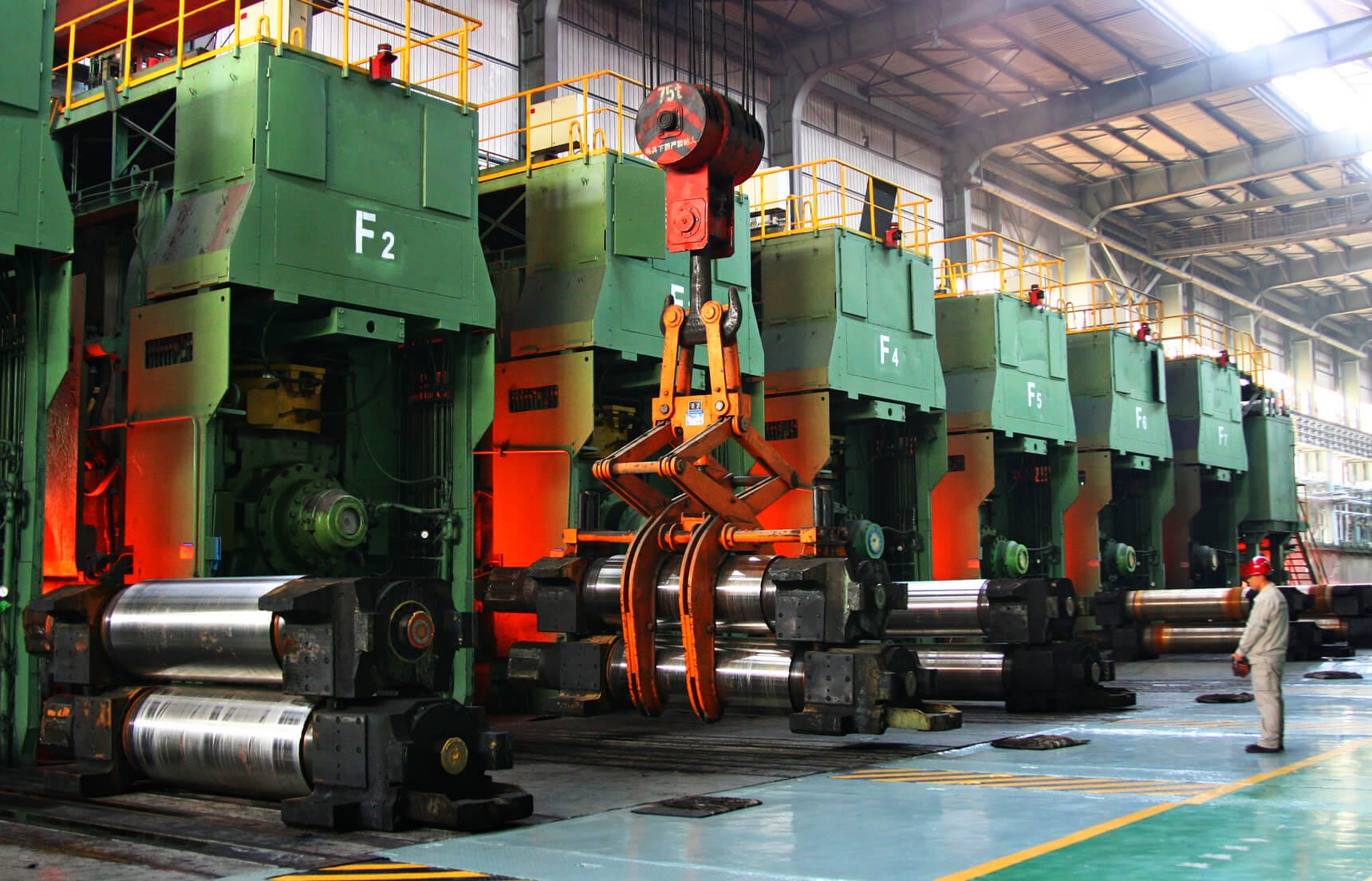Industrial Goods Companies
Industrial Goods Companies Can Save Billions By Avoiding These 5 Digital Commerce Mistakes
Simple digital commerce mistakes from industrial goods companies can be costly in terms of lost revenue, customer dissatisfaction, and wasted time and resources. The good news is any company can overcome these five common errors with the right approach—saving billions in the process.


Industrial goods sales globally are expected to reach over $15 trillion by 2030. Thanks to the digital transformation of the industry, more B2B companies are bringing these sales online every year to improve the customer experience, increase efficiency, and see significant revenue growth.
While industrial goods companies are rapidly adopting digital commerce to reap these crucial benefits, many make simple mistakes along the way that seriously hinder their progress. These oversights can be costly in terms of lost revenue, customer dissatisfaction, and wasted time and resources. The good news is that they can be confronted and combatted with the right approach.
At the 2023 Spryker EXCITE, digital commerce expert Volker Boehlke, Head of Spryker Solutions at diva-e, took the stage to explore the common threads within the industry that often lead to failure when left undiagnosed.
From his insights, we’ve extrapolated five mistakes that inhibit industrial goods brands from reaching their full online potential:
- Lack of Clear Vision & KPIs
- Insufficient Customer Feedback Research
- Mistaking Maximum Awesome Products (MAPs) for Minimum Viable Products (MVPs)
- Allowing Feature Creep
- Inadequate Stakeholder Involvement & Scope Management
Following his expert advice, industrial goods companies can tap into the potential of digital commerce with the tools they need to anticipate and avoid common missteps that could cost them in the long run.
1. Lack of Clear Vision & KPIs
If your company hopes to deliver on digital commerce expectations, the first step is to define a clear vision and establish specific KPIs to achieve your desired outcome. While it sounds elementary, this is a fundamental mistake that industrial goods companies commit either when bringing their business online or challenging their current strategy to keep up with rapidly changing market conditions—which has a significant cumulative impact on success.
This is particularly pertinent for industrial goods companies due to the unique challenges they face in transitioning to digital commerce. Unlike consumer-facing industries, industrial goods companies often operate in complex B2B ecosystems with longer sales cycles, multiple stakeholders, and diverse customer needs. In this context, having a clear vision and specific KPIs is essential for aligning internal teams and external partners towards common objectives.
Boehlke warns that tight deadlines are only achievable if you’ve clarified the vision and KPIs in detail. Communication challenges, especially when working with international teams, highlight the importance of spreading a clear vision and ensuring that everyone involved understands and aligns with the project goals. By establishing comprehensive KPIs, you also set yourself up with valuable data that can be used to inform future decision-making.
2. Insufficient Customer Feedback Research
While you may have your vision and KPIs in order, another common mistake is meeting the goals you’ve set out—but realizing too late that your customers do not value what you’ve built. This outcome indicates a company’s lack of continuous and thorough research in the form of customer interviews and data analytics. A simple misstep like this can take a real toll, as thorough research and continuous feedback are crucial for understanding the evolving needs of industrial clients, who may have specific requirements regarding product specifications, delivery timelines, and technical support.
"Many people don't really know what the customers think about their platforms. They have asked them—but two years ago, maybe. So they have a little bit of data, some qualitative feedback here and there, but it's not done constantly."
Establishing a feedback loop is one way to ensure continuous improvement over time. This means that whenever your company rolls out a feature, solution, or experience in a new country or region, there should be a designated process for asking for feedback.
Important considerations include:
- What channels do you use to connect with customers for feedback?
- Which team members own feedback communication?
- How do you measure performance?
- How frequently do you contact customers for feedback? Just once, every month, twice a year, etc.?
- What is the follow-up process, if any?
- How do you compare results between countries?
Boehlke asserts that a feedback loop should be established on an organizational level to create long-term success. By asking for qualitative feedback, the company can make necessary adjustments to provide continuous value in future years. Of course, measuring quantitative metrics such as order numbers is essential, but ask yourself: Is that the only value you want to be able to prove confidently?
3. Mistaking Maximum Awesome Products (MAPs) for Minimum Viable Products (MVPs)
If you’ve embarked on digital transformation at your company, you’ve likely heard of the Minimum Viable Product (MVP) approach. Many B2B industrial goods companies rely on this methodology to strategically roll out practical solutions in fast-evolving markets, minimize poor investments, and incrementally improve products based on user engagement and feedback. This is done by focusing on small, incremental releases over time, or MVPs, rather than expecting to deliver a final product right from the start, all of which is key to navigating the complexities of digital commerce with a focused, iterative approach.
This method is highly advantageous for industrial goods companies because it shortens lengthy and complex sales cycles by enabling rapid time-to-market. It’s also shown to help industrial goods companies mitigate risks associated with market uncertainty, technological changes, and evolving customer preferences.
To properly deploy this method, it’s crucial to break your roadmap into steps that lead you to your larger vision—and this is where our next common mistake comes into play.
One common mistake I've seen is that MAPs are disguised as MVPs.
A big fan of NASA, Boehlke gives the example of the Apollo moon landing program. Their ultimate vision was to go to the moon, making this their MAP project. The mistake many teams make is labeling the MAP as an MVP project—a grave error under the MVP approach.
That’s because to reach its goal, NASA broke the process of landing on the moon into different project phases or MVPs to surpass each step in its timeline. These steps included getting the rocket off the ground, practicing orbits around Earth, establishing docking maneuvers, and flying to the moon and back before ever landing there. After all this work, they were finally ready to do the moon landing—an approach you can also translate to your digital commerce projects.
By defining the small steps that lead to your larger vision, you break this vision down into the parts you need to reach that overall goal, or your MAP, making it manageable and achievable. If you fall into this trap of calling your MAP an MVP, your goal will appear overly ambitious and take too long to develop. But if you break it down into real MVPs, your objectives will be more focused and delivered faster.
Hilti, a multi-billion dollar multinational, develops, manufactures, and markets construction, building maintenance, and mining products. Following the MVP approach, Hilti tests the waters with an individual solution before replicating and scaling successful practices and rejecting less successful initiatives. Launching country-specific stores tailored to each market’s individual requirements, the fifteen different Spryker stores have been designed in a very customer-centric way, helping them reach €5 billion in annual revenue.
Learn more about the MVP approach and how to make it work for your company with our comprehensive guide we created together with our partner Echidna.
4. Allowing Feature Creep
Feature creep is another issue that often hinders teams from delivering on their digital commerce goals. Also known as scope creep, feature creep is a gradual, unintentional accumulation of new features, functionalities, and design components in a product beyond its original scope. It occurs when additional elements are added without proper assessment or approval, often leading to a product becoming bloated and overly complex—and taking much more time than initially forecasted.
Feature creep is a slippery slope. Adding new features requires additional development time and resources, which can delay product launches and increase overall costs. Plus, when too many features are added, teams struggle to focus on the product’s core functionality, making the final product incoherent or challenging to use. This is important because industrial buyers have specific requirements and preferences when it comes to purchasing industrial goods online. A cluttered and confusing user interface makes it difficult for users to find relevant products, compare options, and complete transactions, leading to user frustration and decreased adoption.
To avoid feature creep, it’s necessary to follow the principles of the MVP approach, which means:
- Focusing on core functionality by identifying the essential features that the project must have to meet the needs of its users.
- Prioritizing features based on value, including customer experience and what will help you achieve your business goals.
- Collecting user feedback as soon as possible to identify areas where the product can be improved. Then, use this feedback to prioritize changes.
You’ve probably heard this before: “It’s impossible to go live without X and Y.” In these moments, it’s essential to challenge your team to find alternative solutions that do not hinder your progress overall. By having ruthless discussions about what must be done to launch a project, everyone will stay on track to reach the overall objective faster.
Have these discussions, even if they're hard. To be successful in your projects, narrow them down to the absolute minimum and find clever alternatives to reach your goals. Because, otherwise, you may lose the race.
5. Inadequate Stakeholder Involvement & Scope Management
The final common digital commerce mistake industrial goods companies make is inadequate stakeholder involvement and scope management. Many companies fear having too many cooks in the kitchen. However, a lack of stakeholder involvement typically results in misalignment and confusion, hampering a project’s progress and causing delays, wasted resources, and missed opportunities.
Stakeholder involvement doesn't mean steering the course. Stakeholder involvement means really working with the people and being there every day—and it's a critical success factor.
For industrial goods companies, this is particularly prevalent due to complex specifications, customization options, and technical requirements. Without sufficient stakeholder involvement, developers may overlook crucial features or functionalities essential for showcasing these complexities effectively online. Moreover, inadequate scope management can lead to a mismatch between the platform’s capabilities and the company’s product offerings, resulting in a poor user experience and lost sales opportunities.
In fact, Boehlke believes digital commerce success has a lot to do with exceptional stakeholder involvement and scope management, particularly while working between multiple countries with varied e-commerce terminology and cultures.
He suggests bringing engineers from different departments into the conversation every day to solve issues together. This will help your team get the right people deeply involved in each phase of the project, which supports the relevance of an MVP approach.
Learning From Our Mistakes
Have you made similar mistakes in your journey to digital transformation? Luckily, there’s still time to learn from them. By heeding the advice laid out by experts, industrial goods companies will avoid costly errors, streamline their processes, and reap the rewards of a successful digital commerce strategy, contributing to the expected $15 trillion in industry sales by 2030.
If you’re looking for more on critical trends for industrial goods companies to ensure your business thrives in this rapidly evolving market, our Industrial Goods Playbook is a comprehensive guide for approaching all the challenges facing industrial goods companies today.
Finally, if you want access to the latest industrial goods inspiration and education, join us at EXCITE 2024 this September in Berlin. Our digital commerce conference will help you elevate your understanding of the industry, ignite your curiosity, and forge valuable connections. Hope to see you there!